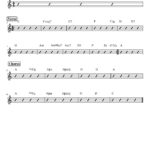For musicians seeking to lay down the rhythmic groundwork of any ensemble, the Four String Bass Guitar stands as an undisputed champion. Alongside drums, the bass guitar forges the compelling groove that moves audiences and acts as the rhythmic and harmonic core of countless songs. As the most prevalent and recognized type of bass guitar, the 4-string model is widely regarded as the essential standard for low-end frequencies, often tuned to mirror the deep resonance of a double bass.
When embarking on the journey to select your ideal four string bass guitar, body style and its corresponding tonewood become crucial initial considerations. For bassists drawn to the warm, resonant character favored in genres like country or folk, a semi-hollow body construction provides an inherent acoustic richness that naturally enhances your tone. Conversely, solid-body basses prove to be incredibly versatile, fitting seamlessly into virtually any musical style, with particular prominence in rock and metal genres.
Alt text: A sleek solid body four string bass guitar in sunburst finish showcasing its classic design and versatile appeal for various music genres.
Regardless of the chosen body style, careful examination of the tonewood is paramount. Alder enjoys widespread popularity due to its balanced tonal properties, delivering a well-rounded sound suitable for diverse musical contexts. Musicians seeking enhanced warmth and smoothness in their bass lines might gravitate towards mahogany, prized for its rich and mellow character. For technically focused players who prioritize tight sustain for intricate and rapid bass passages, basswood emerges as a compelling option, known for its focused and articulate sound. Alternatively, players who favor extended sustain and bright tonal qualities will appreciate the brilliance and clarity inherent in maple tonewoods.
Once you’ve established your preference for tonewood, the next pivotal step in shaping the sonic identity of your four string bass guitar lies in the selection of the pickup system. Here, you’ll encounter the choice between active and passive pickups, each offering distinct sonic characteristics. The fundamental difference lies in their internal circuitry: active pickups incorporate a miniature preamp within the pickup housing, while passive pickups transmit an unaltered signal directly to the output jack. Consequently, passive pickups are celebrated for delivering a classic, full-bodied tone that harmonizes effectively with a wide spectrum of amplifiers, making them incredibly versatile. In contrast, active pickups generate brighter, more articulate sounds with increased output, providing the power to drive an amplifier into overdrive more readily, catering to genres that demand aggressive and powerful tones.
Another key decision in selecting your four string bass guitar involves choosing between fretted and fretless fingerboard styles. A fretted fingerboard features metal strips (frets) that divide the neck into precise semitones, offering both visual and tactile guidance for finger placement. This configuration simplifies the learning process, particularly for beginners, and the definitive contact with the metal frets contributes to a clear, articulate quality in the bass’s sound. Conversely, a fretless fingerboard presents a smooth, uninterrupted playing surface, making it a favored choice among experienced players. The absence of frets allows for expressive slides and vibrato techniques, unlocking a wider range of dynamic and nuanced sounds. By pressing the string directly against the wood of the fingerboard, a fretless bass also imparts a slightly warmer, more mellow sonic character.
Ultimately, whether you lean towards a solid or semi-hollow body, active or passive pickups, or fretted or fretless configuration, the most crucial aspect when choosing your four string bass guitar is ensuring it resonates with your individual musical tastes and playing style. If you find yourself uncertain about where to begin, draw inspiration from your favorite bassists and observe the instruments they employ. Emulating your idols’ gear choices can be an excellent initial step in finding a four string bass guitar that aligns with your musical aspirations and sets you on the path to crafting your own signature sound.

